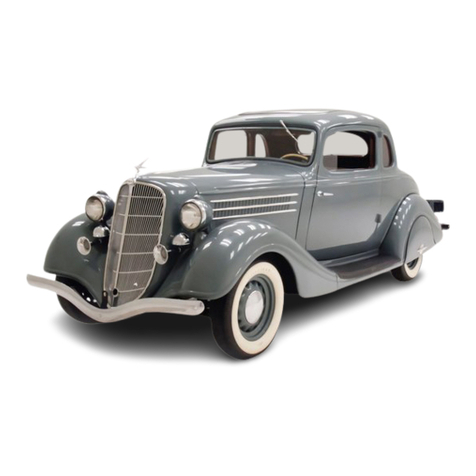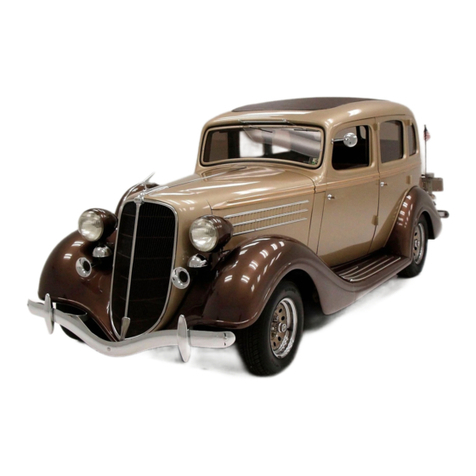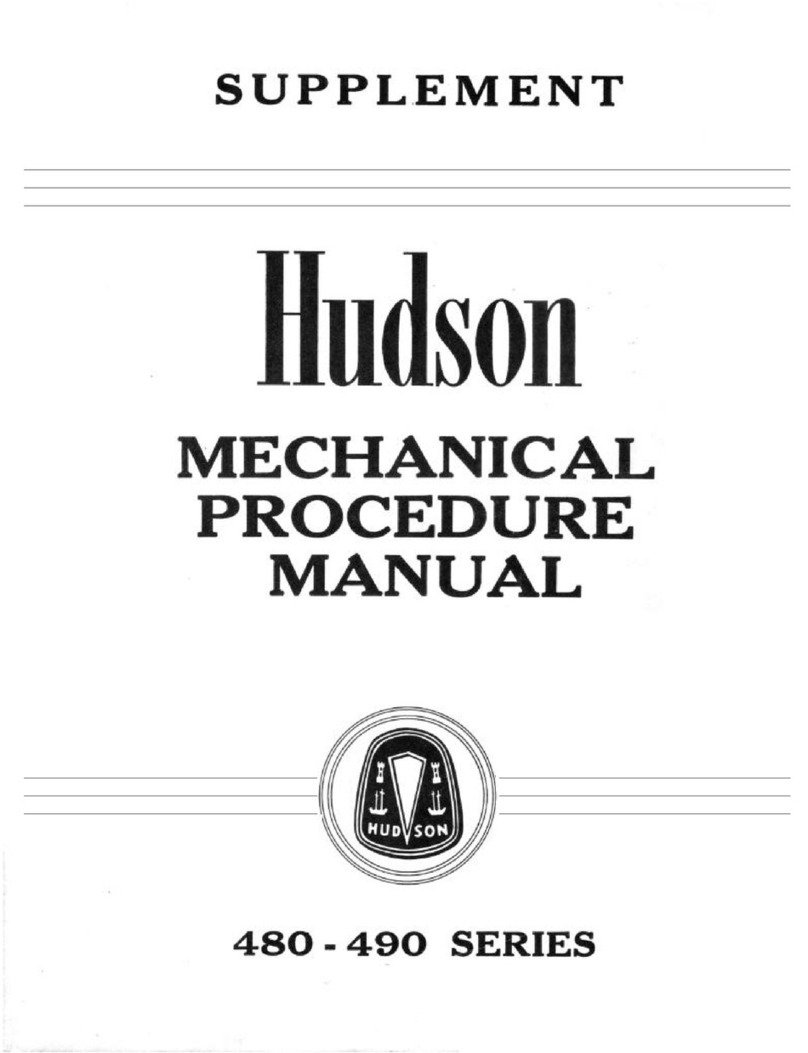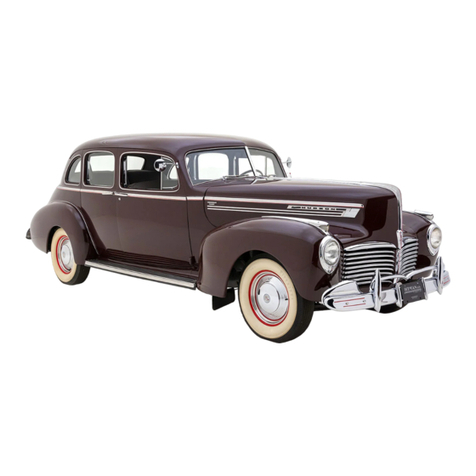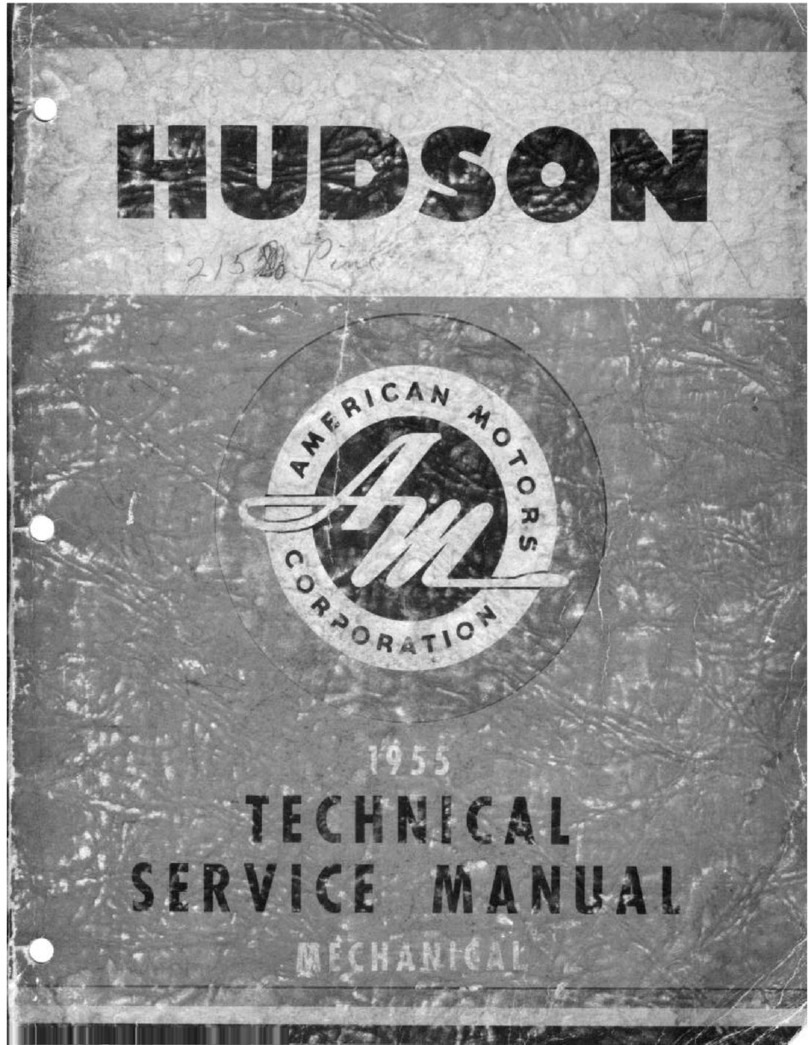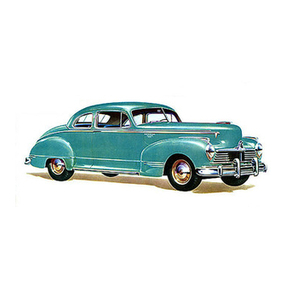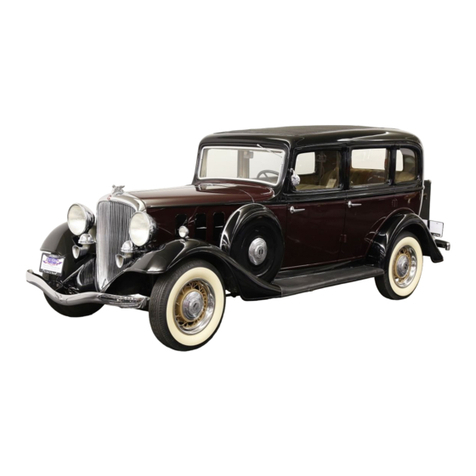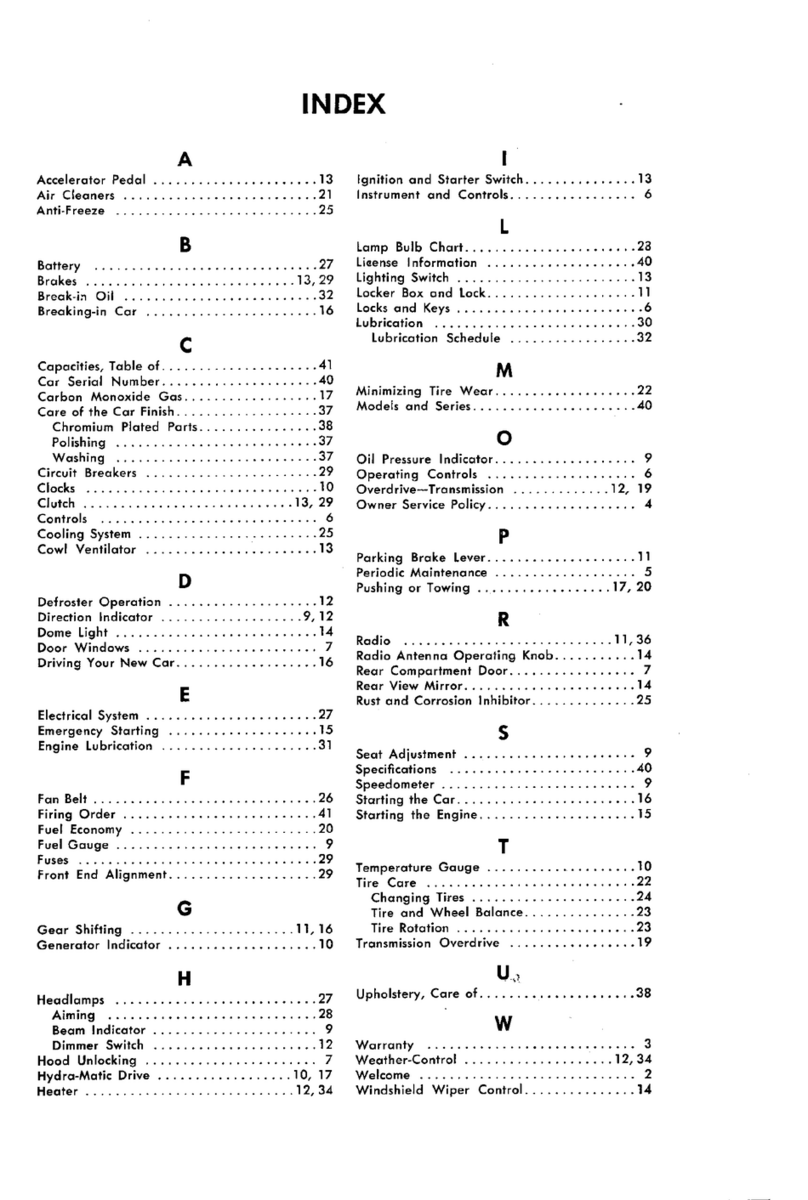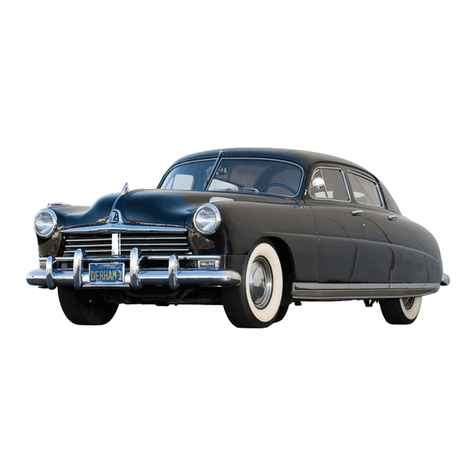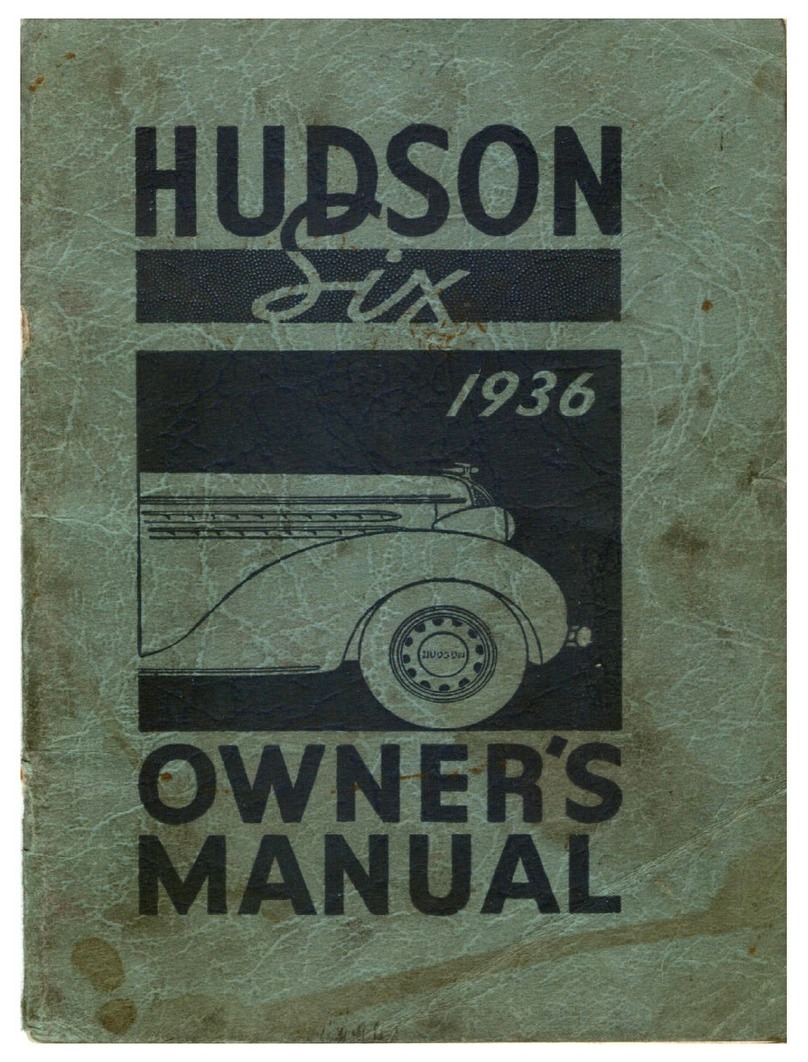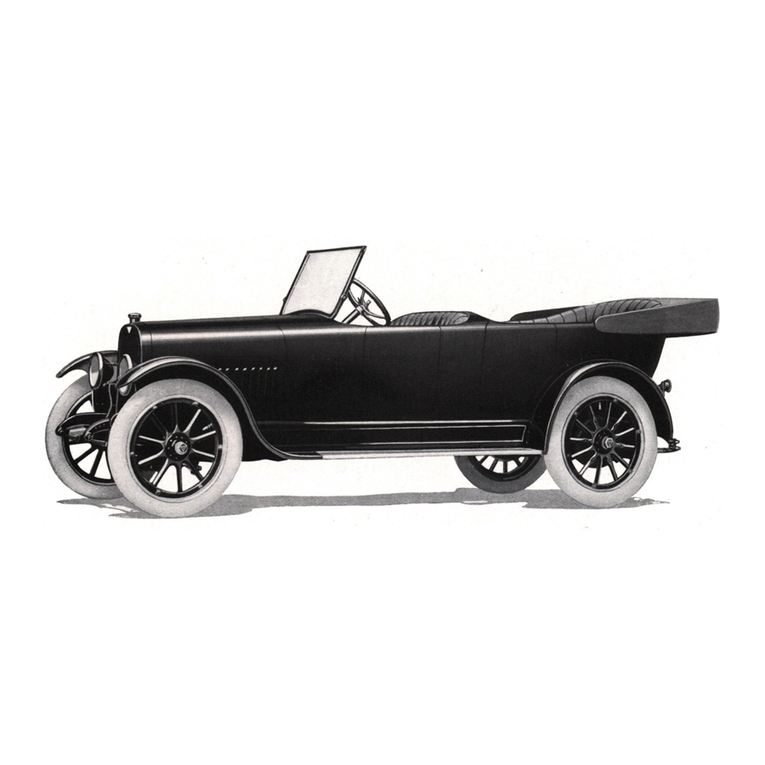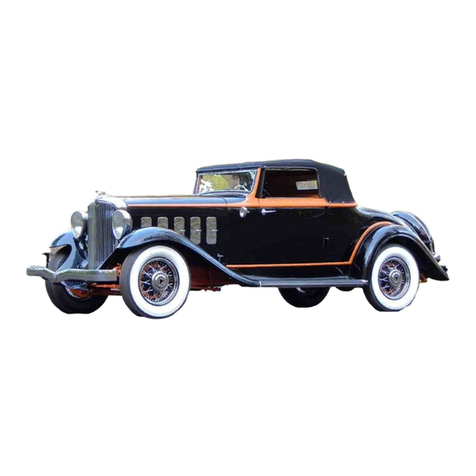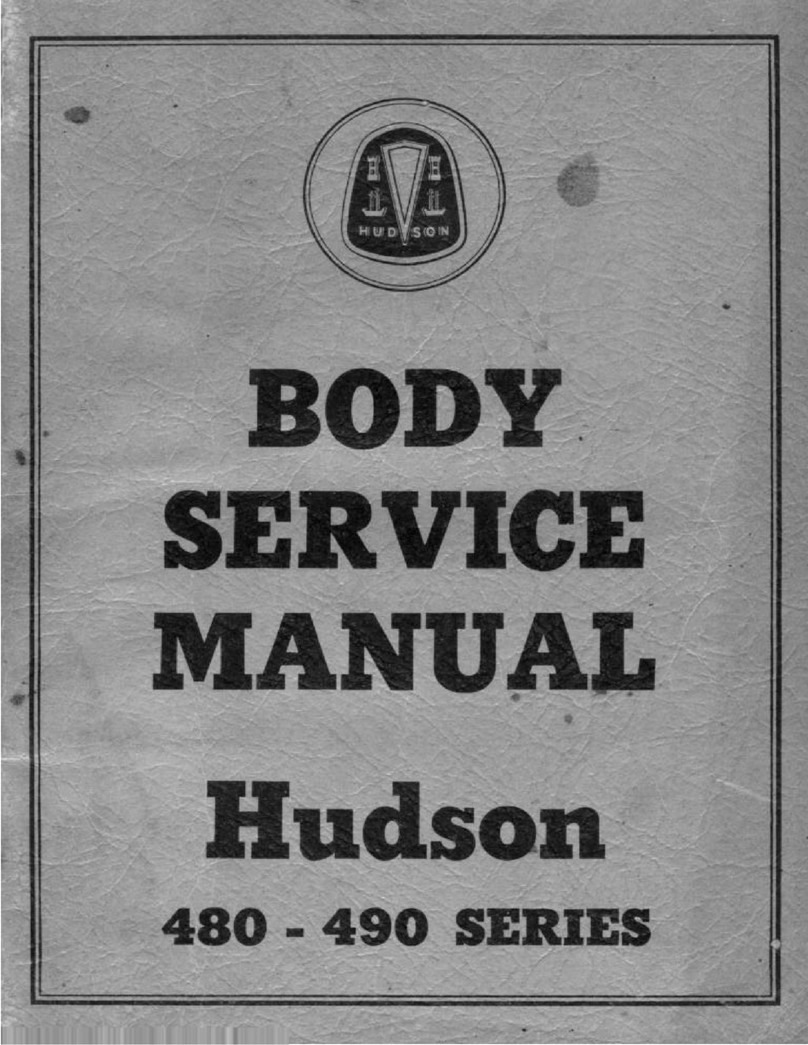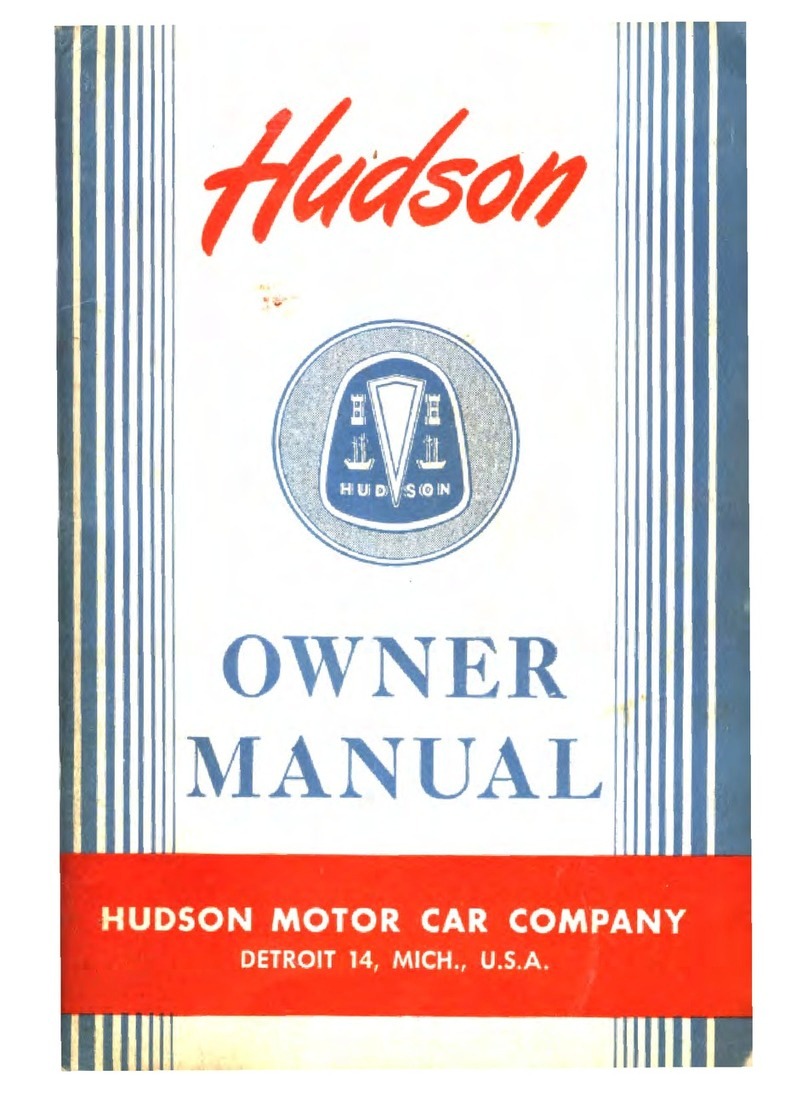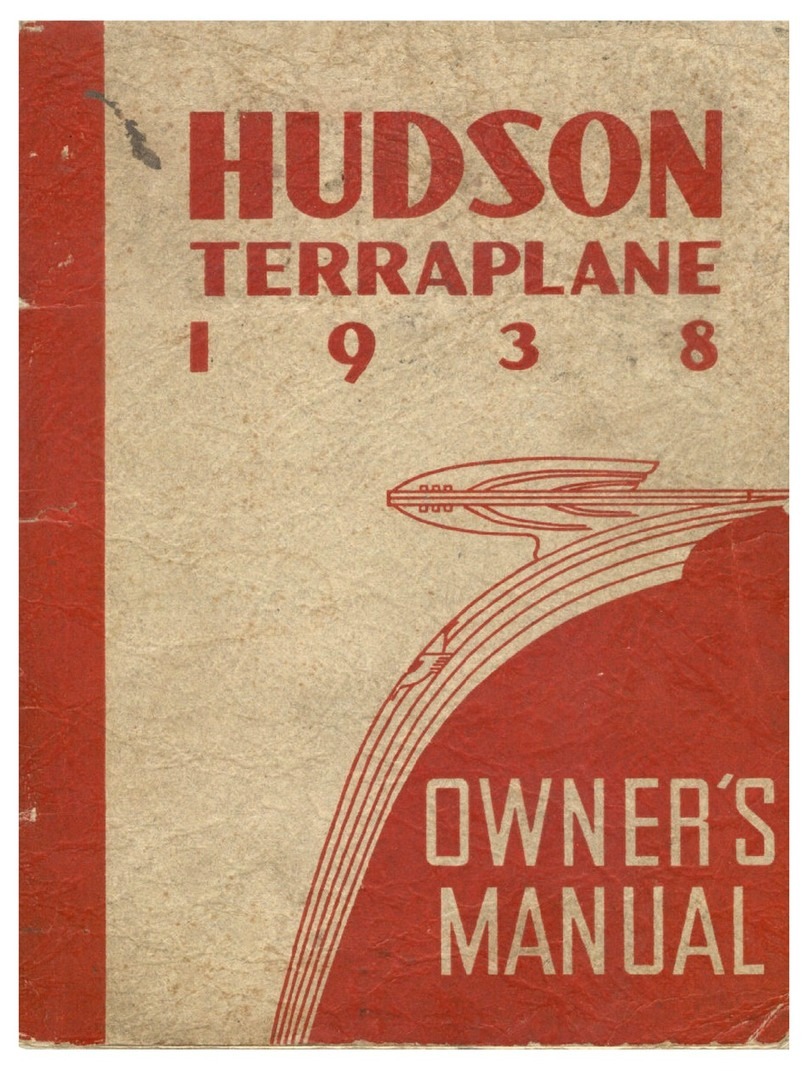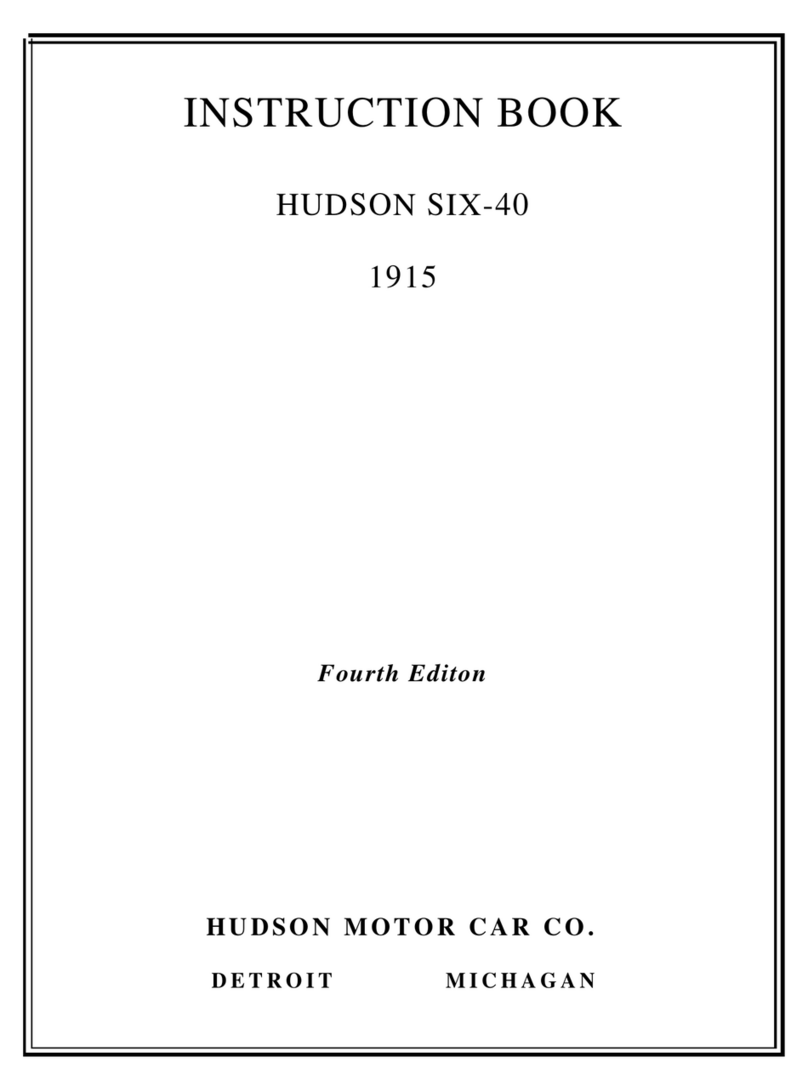
ELECTRICAL 7
Preferred Method:
Turn the adjusting screw until the specified dwell is obtained
as measured by a dwell meter. (See specifications.)
Alternate Method:
Turn the adjusting screw in (clockwise) until the engine
begins to misfire, then give the wrench one-half turn in the
opposite direction (counterclockwise) thus giving the ap-
proximate dwell angle required.
Removal of Distributor Cap
The cap is removed as shown in Figure 3. Place screw driver
in slot head of the hatch, press down and turn 1/4 of a turn in
either direction.
FIGURE 3—Distributor Cap Removal
Distributor Inspection and Checking
With the distributor removed from the vehicle, it is advisable
to place the distributor in a distributor testing machine or
synchroscope. When mounting distributor in tester, first
secure the gear in the drive mechanism, then push distributor
housing down toward the gear to take up end play between
the gear and housing, and finally secure the housing in the
tester. Test the distributor for variation of spark, correct
centrifugal and vacuum advance, and condition of contacts.
This test will give valuable information on the distributor
condition and indicate parts replacement which may be nec-
essary.
When checking the distributor condenser, it should be
checked with a reliable make of condenser tester. The con-
denser should be checked for the following properties.
Insulation Resistance (or Leakage, Series Resistance, Break-
down Test, and Capacity (mfd.).
Replacing Distributor Contact Set
The contact point set is replaced as one complete assembly
(Fig. 4). The BREAKER LEVER SPRING TENSION and
POINT ALIGNMENT on the service replacement contact
set are factory adjusted. Only the POINT OPENING requires
adjusting after replacement.
FIGURE 4—Removing Distributor Contact Set
Replacement of contact set is as follows:
Remove the two attaching screws (Fig. 4) which hold the
base of contact set assembly in place.
Remove the condenser lead and primary lead from the nylon
insulated connection by turning screw (Fig. 4) in contact set.
Replacement is the reverse of removal.
CAUTION: At time of assembly, make sure the
condenser lead and primary lead are located as in,
Figure 5.
Leads must be properly located to eliminate lead interfer-
ence between cap, weight base, and breaker advance plate.
Add a trace of Ball Bearing Lubricant to the breaker cam.
Adjusting Distributor Dwell Angle
Either of the following methods can be used to adjust the
dwell angle to the proper setting off the vehicle:
Screw Adjustment Method—Distributor Mounted in
Distributor testing Machine
Connect the dwell meter to the distributor primary lead.
